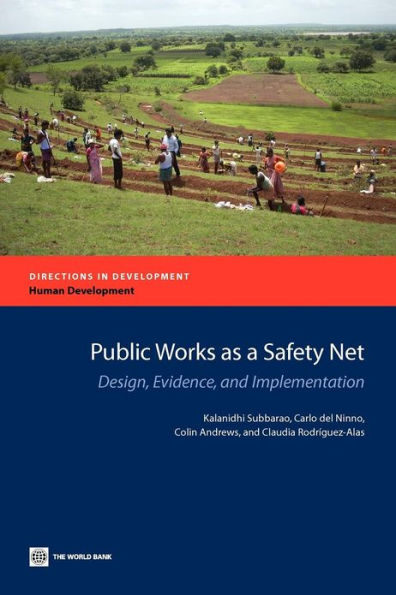Public Works as a Safety Net: Design, Evidence, and Implementation
Public Works as a Safety Net: Design, Evidence, and Implementation reviews the conceptual underpinnings and operational elements of public works programs around the world. Drawing from a rich evidence base including program documentation, policy papers, peer-reviewed publications, and empirical data from over 40 countries, it provides an overview of the state of public works programs and how they function as part of wider social protection systems. The book provides a comprehensive analysis of the design features and alternative models of public works implemented under diverse country settings. Topics covered include program objectives, institutional and financing arrangements, targeting, costs and benefits, gender considerations, and monitoring and evaluation. Political economy issues that inform the development and effectiveness of public works programs are also addressed, bringing into focus the centrality of governance and transparency to ensure the achievement of program outcomes. The comprehensive nature of the review, and its thorough analysis of available data, fills a gap in knowledge related to public works program design and implementation. The book should benefit both policy makers and practitioners involved in public works planning. It will also help inform future efforts to incorporate public works as an important tool of an integrated national social protection systems, that will help respond to unpredictable global shocks leading to sudden declines in employment, whether seasonal or systemic.
1112350180
Public Works as a Safety Net: Design, Evidence, and Implementation
Public Works as a Safety Net: Design, Evidence, and Implementation reviews the conceptual underpinnings and operational elements of public works programs around the world. Drawing from a rich evidence base including program documentation, policy papers, peer-reviewed publications, and empirical data from over 40 countries, it provides an overview of the state of public works programs and how they function as part of wider social protection systems. The book provides a comprehensive analysis of the design features and alternative models of public works implemented under diverse country settings. Topics covered include program objectives, institutional and financing arrangements, targeting, costs and benefits, gender considerations, and monitoring and evaluation. Political economy issues that inform the development and effectiveness of public works programs are also addressed, bringing into focus the centrality of governance and transparency to ensure the achievement of program outcomes. The comprehensive nature of the review, and its thorough analysis of available data, fills a gap in knowledge related to public works program design and implementation. The book should benefit both policy makers and practitioners involved in public works planning. It will also help inform future efforts to incorporate public works as an important tool of an integrated national social protection systems, that will help respond to unpredictable global shocks leading to sudden declines in employment, whether seasonal or systemic.
29.95
In Stock
5
1

Public Works as a Safety Net: Design, Evidence, and Implementation
452
Public Works as a Safety Net: Design, Evidence, and Implementation
452Paperback
$29.95
29.95
In Stock

Product Details
| ISBN-13: | 9780821389683 |
|---|---|
| Publisher: | World Bank Publications |
| Publication date: | 12/11/2012 |
| Series: | Directions in Development - Human Development |
| Pages: | 452 |
| Product dimensions: | 6.00(w) x 9.00(h) x (d) |
From the B&N Reads Blog
